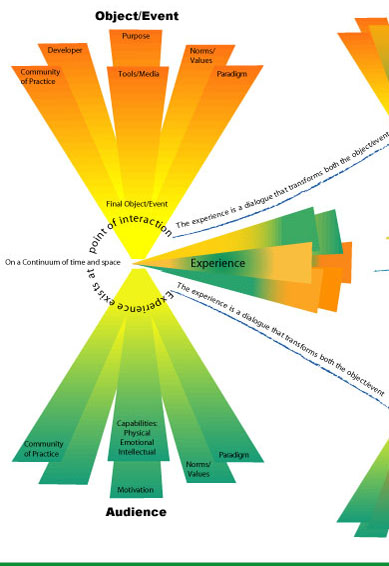The
Working Narratives
Interaction, Engagement & Media
On
this site you'll find info on recent and past talks, papers, & research
including:
History of children's narrative
from 1000
Characteristics of narrative engagement in print & in games such as interactivity & agency
Children's development & their changing perception of narrative once they enter school
Myth
of Narrative Climax: the Subjugation of Narrative Structure
Imaginative approaches to literacy in the 1700s
Disney stories from the 1920s to 2000
And
other topics related to narrative, interactivity & new media.
This site is always under construction!
Children's
Narrative Experience in Print and Video Games
Children's
earliest narrative experiences are based in orality, visual literacy,
collaboration, interactivity, and performance. These experiences approach
the type of visual, auditory, and interactive participation children
enjoy with digital narratives in computer and video games. In developing
narratives for video games much has been made of the non-traditional
approaches that have been taken to accommodated the multidimensional
components of digital media, approaches that children, adolescents,
and adults readily engage with. Such approaches are, however, similar
in nature to those used in introducing young children to narrative and
seem to be truer to children's (and possibly adults) emerging narrative
process and their perception of narrative then are the narrative formats
and standards with which they are indoctrinated throughout their school
years and which are considered the norm. Children segue from print narratives
to digital narrative easily and 'without pause' because of the critical
perception they develop of narrative through their early print narrative
experiences. The narrative 'inner life' of young children reflects the
multidimensionality of their narrative experiences. It is the multimedia
and interactive perspective of the early print narrative experiences
which children bring with them to the narrative video game that encourages
positive engagement with digital game environments.
The attached poster is a visual representation of the characteristics
which link print and video games.
Narrative
Experience Characteristics: Print and Games
Interaction Experience Schema
The dynamic of interaction between children and objects and events during a narrative experience includes an array of modalities that are far more interesting than the 'single reader' activity. How can we describe the event graphicly? One way is to look at a model of interaction experience.
An experience is created at the time of interaction between the audience and the event. It occurs within a specific space and at a specific moment in time. It can be engaging and memorable,encouraging the development of a personal narrative.
This model is a conceptual representation, a cognitive framework, intended to assist with the thoughtful consideration of the design of experience.

Narrative Experience Poster

Interaction Experience Model
You
have reached the website of Krystina
Madej
Comments and questions are welcome. Forward to ksmadej@sfu.ca.
This page last updated January 2010. Copyright
Krystina Madej 2000 - 2010
